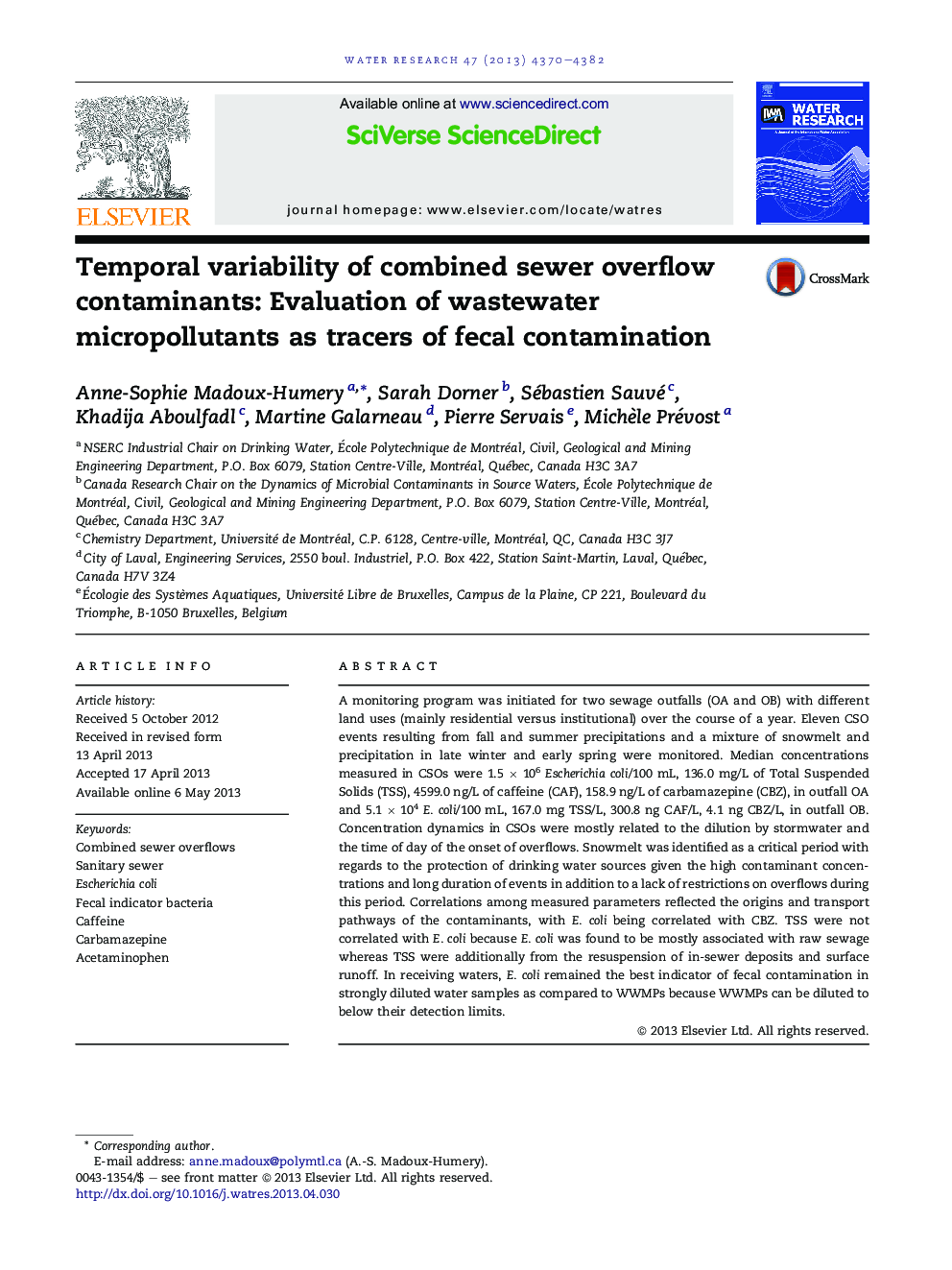| کد مقاله | کد نشریه | سال انتشار | مقاله انگلیسی | نسخه تمام متن |
|---|---|---|---|---|
| 4481985 | 1316845 | 2013 | 13 صفحه PDF | دانلود رایگان |

• CSO monitoring was performed during different seasons.
• Temporal variations depend on the time of the onset and the stormwater proportions.
• Snowmelt has been identified as a critical period for CSO discharges.
• CBZ appeared to be the most suitable wastewater micropollutant tracer in CSO.
• Escherichia coli remained the best indicator of fecal contamination at intakes.
A monitoring program was initiated for two sewage outfalls (OA and OB) with different land uses (mainly residential versus institutional) over the course of a year. Eleven CSO events resulting from fall and summer precipitations and a mixture of snowmelt and precipitation in late winter and early spring were monitored. Median concentrations measured in CSOs were 1.5 × 106Escherichia coli/100 mL, 136.0 mg/L of Total Suspended Solids (TSS), 4599.0 ng/L of caffeine (CAF), 158.9 ng/L of carbamazepine (CBZ), in outfall OA and 5.1 × 104E. coli/100 mL, 167.0 mg TSS/L, 300.8 ng CAF/L, 4.1 ng CBZ/L, in outfall OB. Concentration dynamics in CSOs were mostly related to the dilution by stormwater and the time of day of the onset of overflows. Snowmelt was identified as a critical period with regards to the protection of drinking water sources given the high contaminant concentrations and long duration of events in addition to a lack of restrictions on overflows during this period. Correlations among measured parameters reflected the origins and transport pathways of the contaminants, with E. coli being correlated with CBZ. TSS were not correlated with E. coli because E. coli was found to be mostly associated with raw sewage whereas TSS were additionally from the resuspension of in-sewer deposits and surface runoff. In receiving waters, E. coli remained the best indicator of fecal contamination in strongly diluted water samples as compared to WWMPs because WWMPs can be diluted to below their detection limits.
Journal: Water Research - Volume 47, Issue 13, 1 September 2013, Pages 4370–4382